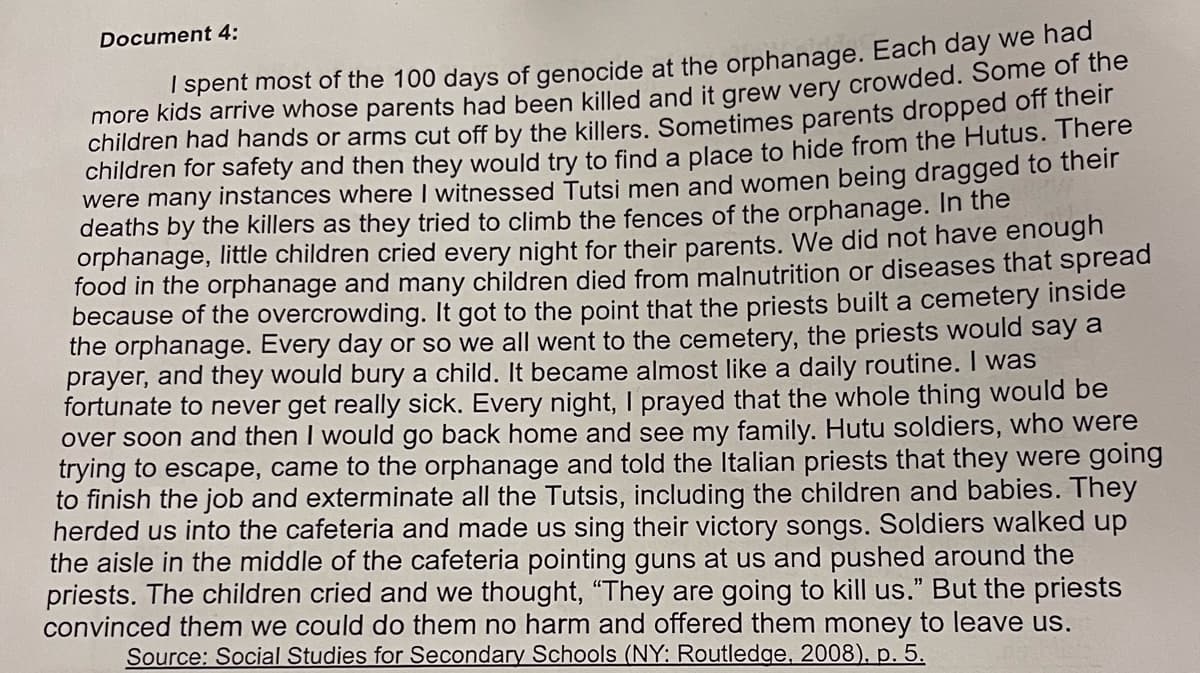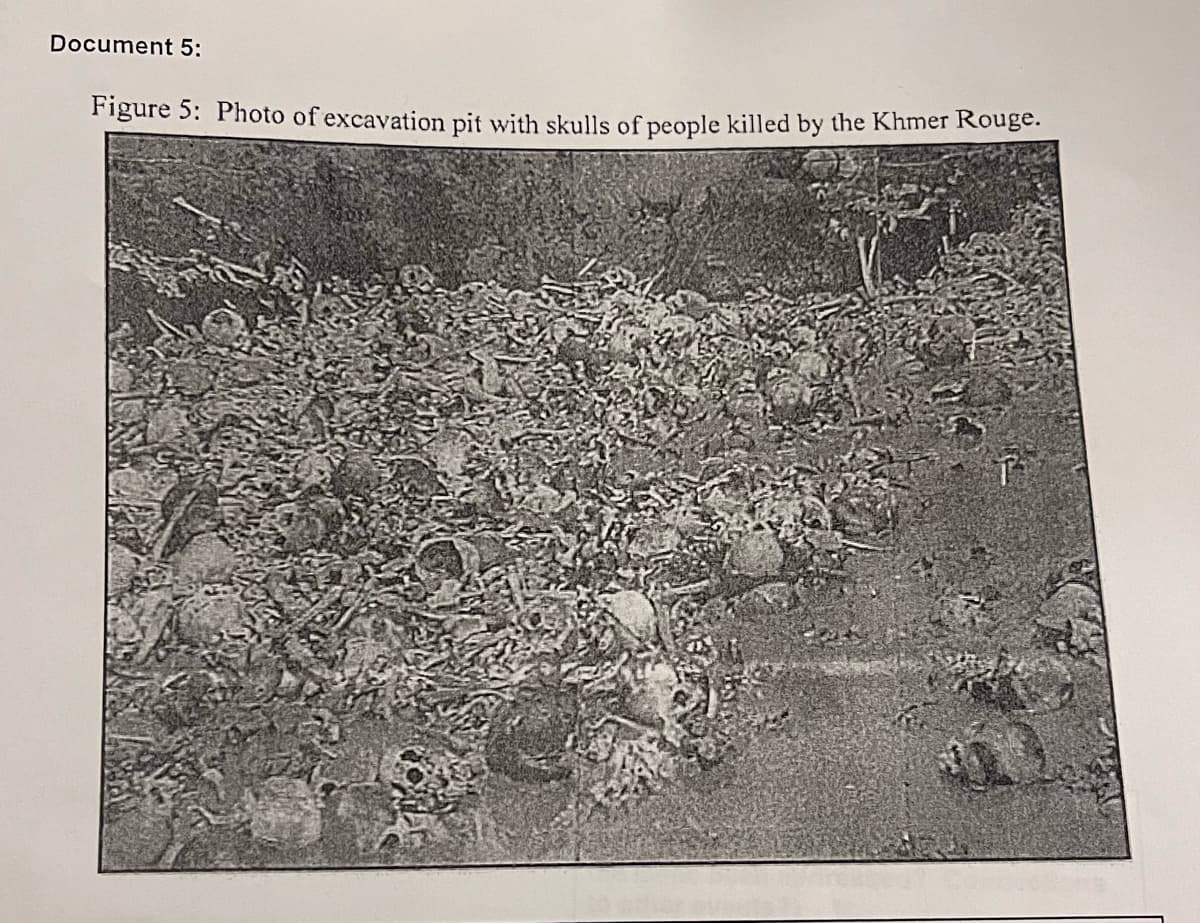ow has this issue continued to be an issue or changed over ti
Related questions
Question
100%
How has this issue continued to be an issue or changed over time?How has the issue been addressed?

Transcribed Image Text:Document 4:
! spent most of the 100 days of genocide at the orphanage. Each day we had
more kids arrive whose parents had been killed and it grew very crowded. Some of the
children had hands or arms cut off by the killers, Sometimes parents dropped off them
children for safety and then they would try to find a place to hide from the Hutus. There
were many instances where I witnessed Tutsi men and women being dragged to then
deaths by the killers as they tried to climb the fences of the orphanage. In the
orphanage, little children cried every night for their parents. We did not have enough
food in the orphanage and many children died from malnutrition or diseases that spread
because of the overcrowding. It got to the point that the priests built a cemetery inside
the orphanage. Every day or so we all went to the cemetery, the priests would say a
prayer, and they would bury a child. It became almost like a daily routine. I was
fortunate to never get really sick. Every night, I prayed that the whole thing would be
over soon and then I would go back home and see my family. Hutu soldiers, who were
trying to escape, came to the orphanage and told the Italian priests that they were going
to finish the job and exterminate all the Tutsis, including the children and babies. They
herded us into the cafeteria and made us sing their victory songs. Soldiers walked up
the aisle in the middle of the cafeteria pointing guns at us and pushed around the
priests. The children cried and we thought, "They are going to kill us." But the priests
convinced them we could do them no harm and offered them money to leave us.
Source: Social Studies for Secondary Schools (NY: Routledge, 2008), p. 5.

Transcribed Image Text:Document 5:
Figure 5: Photo of excavation pit with skulls of people killed by the Khmer Rouge.
Expert Solution
This question has been solved!
Explore an expertly crafted, step-by-step solution for a thorough understanding of key concepts.
Step by step
Solved in 2 steps
